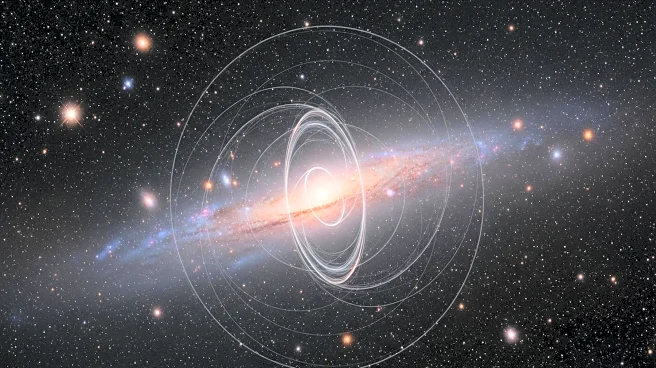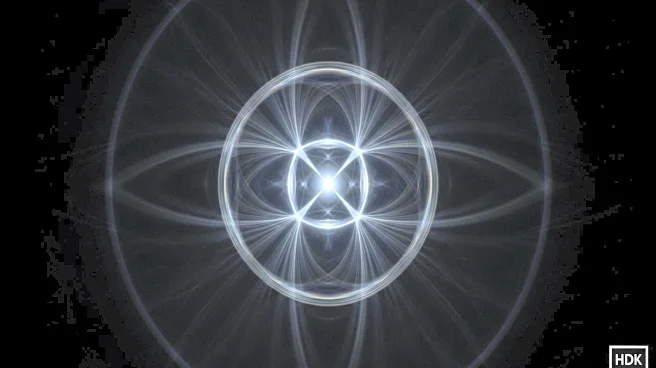What is the story about?
What's Happening?
Astronomers have identified a rare cosmic alignment known as an Einstein Cross, which displays five points of light instead of the usual four. This phenomenon is caused by the distant galaxy HerS-3's light being magnified by foreground galaxies and hidden dark matter. The discovery was made using data from the Northern Extended Millimeter Array (NOEMA) and the Atacama Large Millimeter/submillimeter Array (ALMA). The fifth point of light, initially suspected to be a data glitch, persisted in observations, leading researchers to conclude that a massive dark matter halo was responsible for the unusual lensing effect. This configuration allows astronomers to study both the distant galaxy and the invisible matter bending its light.
Why It's Important?
The discovery of the massive dark matter halo is significant as it provides a new method to study dark matter, which constitutes most of the universe's mass but remains invisible. Understanding the gravitational effects of dark matter can offer insights into the structure and evolution of galaxies. This research enhances our ability to observe distant galaxies and the cosmic phenomena affecting them, potentially leading to breakthroughs in astrophysics and cosmology. The findings also demonstrate the power of modeling in revealing unseen cosmic structures, which could influence future astronomical studies and technologies.
What's Next?
Future observations may reveal additional features such as gas flows from the galaxy, providing further evidence of dark matter's magnifying effects. Continued research could refine models of dark matter distribution and its impact on galaxy formation. The study opens avenues for exploring other cosmic alignments and their implications for understanding the universe's composition.
AI Generated Content
Do you find this article useful?













